Becoming Thai

By Shruti Kothari
Staff Writer
3/8/2019
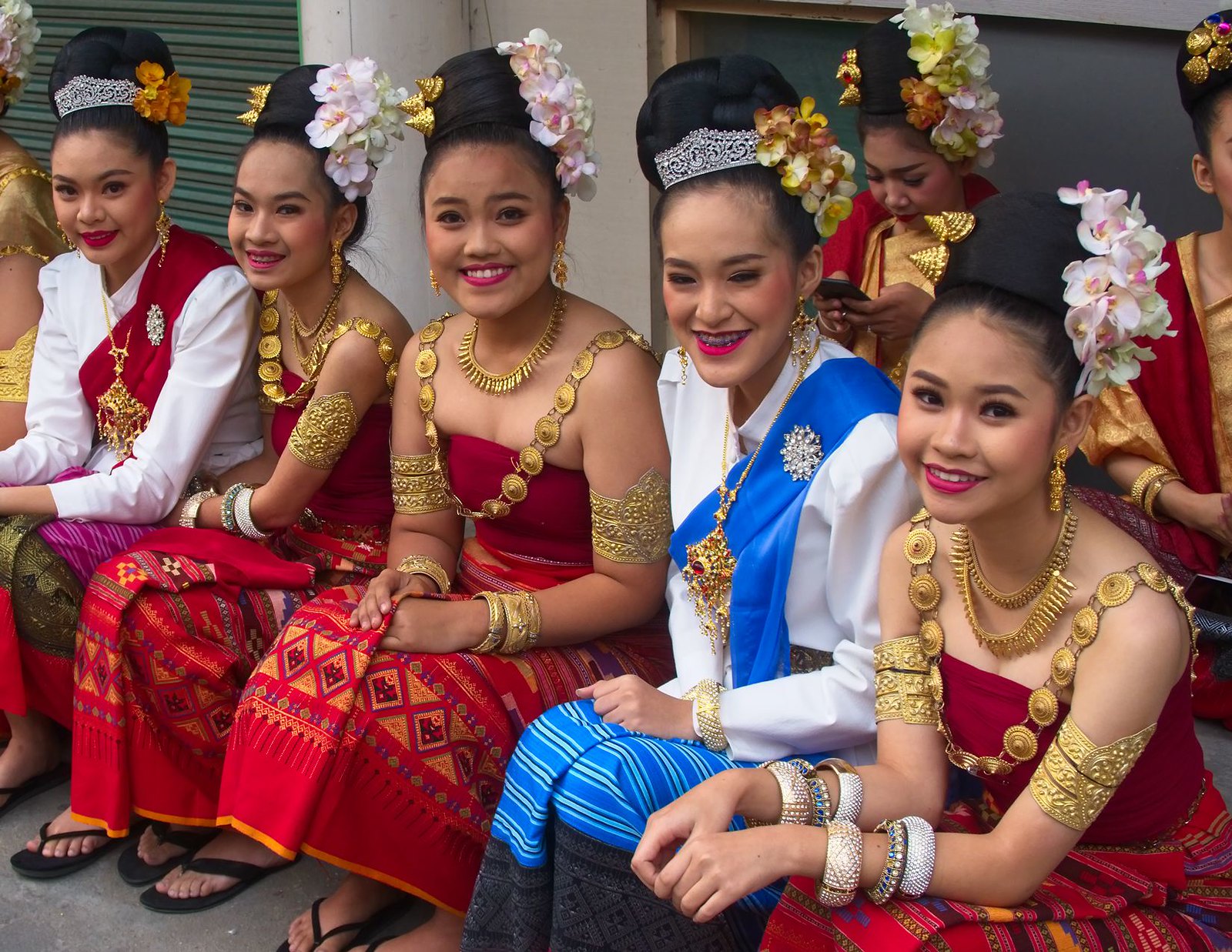
Picture Credit: John Shedrick
As someone who is largely tone-deaf, the Thai language, with its five tones that can change the protagonist of your sentence from a horse to a dog in the space of a well-butchered syllable, is daunting. One of the favorite local tongue-twisters is, “Mai mai mai mai mai?” This, when said correctly, roughly translates to, “New wood doesn’t burn, does it?” I’ve been told that my inflections come across more as, “Wood! Wood…wood. Wood; wood?” Thus, when I was sitting across a matronly lady at the district office as she politely informed me that I needed to provide her with evidence of my Thai-ness, I nodded my understanding and kept my roulette-ish vocabulary to myself.
This requirement of proof was the big step in my naturalization process to becoming Thai. My case officer suggested cobbling together a dossier of captioned photographs documenting my 27 years of being a part of this country. She recommended pictures of me as a newborn in the arms of a Thai nurse, pictures celebrating Loy Krathong with friends, pictures eating pad thai, pictures in national dress, and so on. One for each year, bolstered with some of me perhaps looking studious, or winning sports competitions, to show what an asset I’d be as a citizen. I was never winning any sports competitions, and local Spelling Bee certificates just don’t sparkle the same way as medals or trophies, so I stuck to the patriotic and nerdy portrayals of myself.
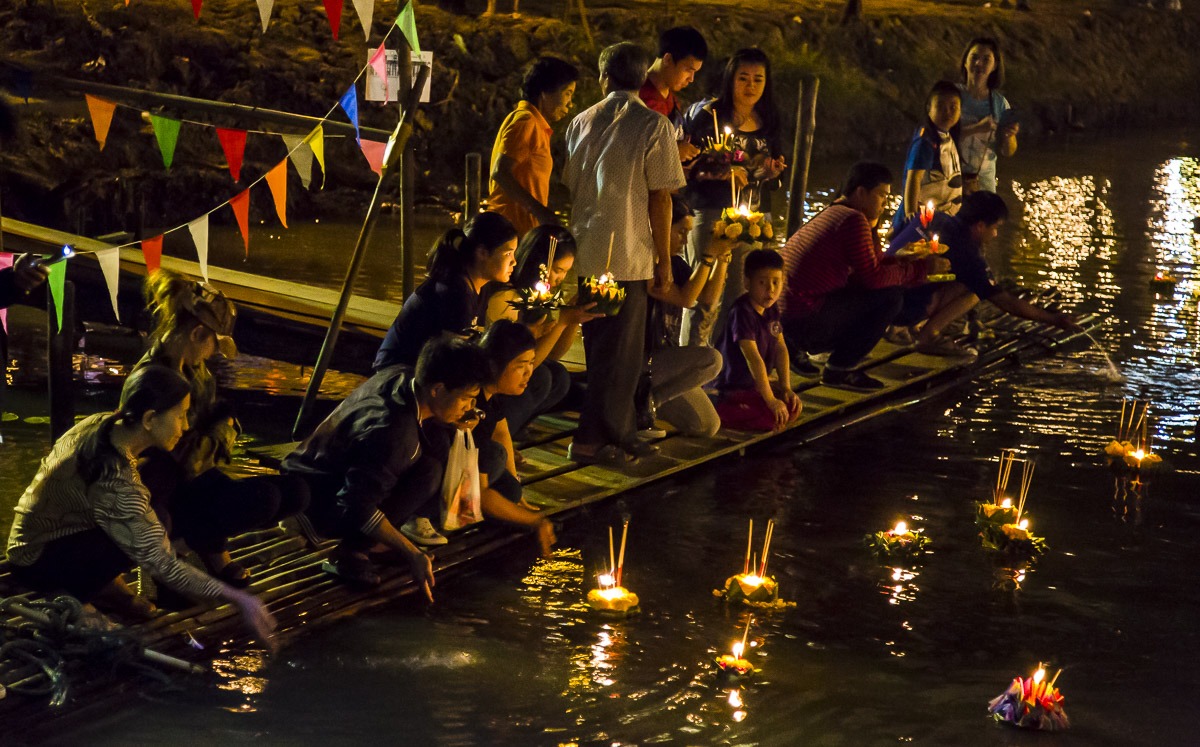
Thais celebrating the Loy Krathong festival (Picture Credit: John Shedrick)
I showed my finished booklet to a Thai friend, who unstuck all the photos and made me start again, with proper alignment and colored pens, displaying typical Thai meticulousness which I clearly lacked. Her handwriting was the graceful, uniform calligraphy of local schools, highlighting another way in which I am a misfit. (Mind, I am aware on a daily basis what a physical misfit I am with my thunder thighs that only fit into L-sized or imported clothing, or with my leg hair density, which bewilders non-Thai-Indian waxing ladies into the occasional apologetic rejection.) Even with my pad thai photographs assuaging my flaring impostor syndrome, I started exploring my layers of separation from the truly Thai experience.
As a staunch, gold-star vegetarian, street food is never an option, except in the cases of fruit, dessert, or during the October nation-wide vegetarian festival. Going to an international school allowed me to travel to hidden corners of the country, kayaking for days across pristine water or zip-lining through dense thickets, but our circuits were completely different from those of local schools. We didn’t share their holidays, their iconic uniforms, or even participate in the same competitions; those were always involving other South East Asian international schools, a tight-knit third culture kid community.
My abysmal command of Thai continues to stun locals and visitors alike. YouTube lessons have gifted me with a rudimentary understanding of the sophisticated Thai alphabet, just enough to read road signs, but I am so ashamed of my shortcomings that I sometimes even pretend to be a tourist.
One of the best aspects of going to the US for university was that I could suddenly, confidently tell people I was from Bangkok; nobody ever switched language on me to probe further. In fact, I was suddenly the most Thai person in the room. Part of me relished questions like, “You speak Thai? So you’re from Taiwan?” and “Did you ride to school on an elephant?”, because although such questions from Ivy League kids was in hindsight perturbing, I became an insider. I could give travel advice to anyone heading to the Land of Smiles, and explain the basics of our history, geography, architecture, and economy.
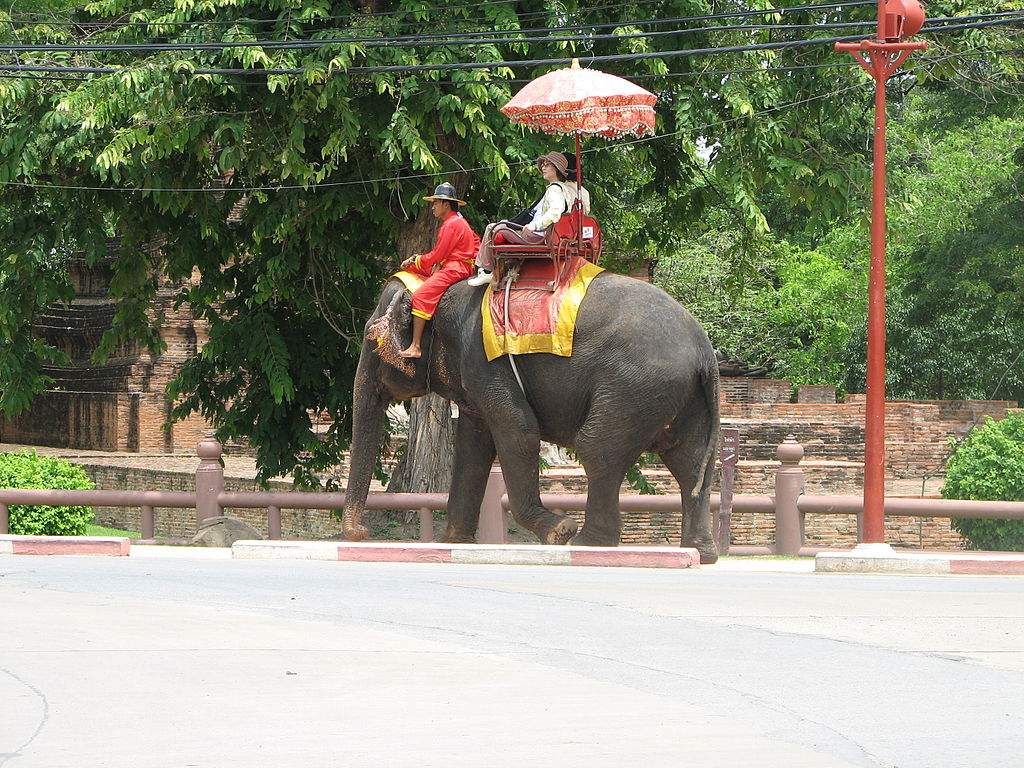
Not how I went to school
But Thailand only became Thai itself in 1939. It was rebranded from Siam by the deeply influential Major General Plaek Phibunsongkhram (Phibun) in an effort to build a new national identity at a time when we were both settling into a new, constitutional monarchy, and striving to avoid colonization. Thailand simply means “land of the free,” and this new name was a celebration of the political independence we had just won from absolutist monarchy, and a warning to opportunistic foreign powers.
Phibun’s initiatives included the invention of the greeting “Sawasdee,” and the birth of the global gastronomical phenomenon that is pad thai. In the late 1930s, Phibun held a competition to produce a national dish, and a humble noodle recipe involving tamarind, shallots, and shrimp paste won. The noodles, in the time of a stock shortage, provided a staple that used less rice than, well, rice, and the flavors were milder and less pungent than some more traditional items like nam prik, whilst still maintaining the typical salty-sweet-sour balance. The recipe of this new dish, named “Thai stir-fry,” was distributed by the Public Welfare Department far and wide with the slogan, “noodle is your lunch.” Cooking it, selling it and eating it were considered acts of patriotism, and this campaign worked so well that pad thai is now the quintessential Thai dish. In fact, a Thai-Indian friend marrying a Texan gentleman recently chose the wedding hashtag #PadThaiMeetsBeanBurrito to represent their union.
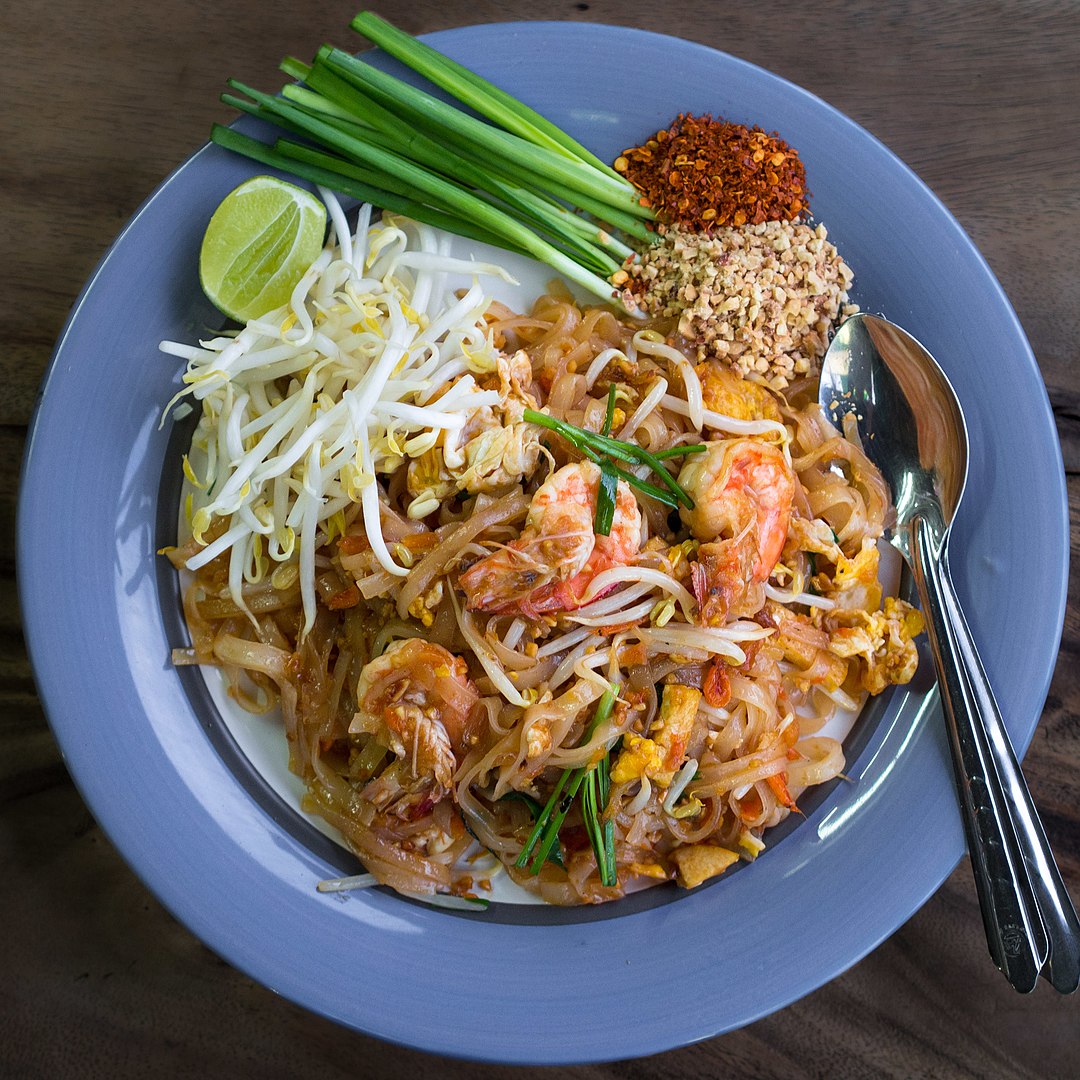
Pad thai
Another decree was that every Thai national should have a Thai last name. This rule was introduced in 1913 by the British-educated King Rama VI, who personally crafted over 6,000 names for those around him. Before that, people simply used parental or neighborhood names to differentiate themselves. In Thailand, perhaps the reason each last name can be so long is that sharing a last name with someone guarantees that you are either related by birth, adoption, or matrimony. Each surname is unique to a family. So, not only was taking on a Thai last name a form of phonetic assimilation, it also integrated you into the national genealogical identification system. All citizens who naturalize now are still required to change their names. I kept mine, but only because my younger siblings were born Thai with the unique family name of Kothari (Thailand doesn’t have birthright citizenship, and my parents only became Thai nationals after I was born), and when I naturalized, they kindly allowed me to join their clan. Sorry to all other unrelated Kotharis, you can’t sit with us.
These mandates are part of the reason why, over generations, immigrants have assimilated well in Thailand compared to other countries. Chinese immigrants in particular consider themselves fully Thai. This was partially organic; many of the Chinese who came here were single men looking for work. They learned the language and customs, and eventually married Thai women, producing children who were very much Thai; King Rama I himself had some Chinese blood. However, some policies were oppressive and targeted. Typically Chinese-dominated fields were more heavily taxed and regulated, and Chinese-owned businesses were acquired by the government, unless the owners cooperated with the Thaification drive. Schools had to be Thai-medium, and learning other languages, in particular Mandarin, was strictly restricted. There was anti-Chinese sentiment for two reasons: one, they were doing well financially, which nettled less well-off locals, and two, bandits from certain Chinese provinces had taken to raiding Buddhist temples in the Haw Wars.
While many policies may have been aimed at Chinese immigrants, Phibun’s efforts ensured the lasting Thaification of all the other immigrant groups, like the Isan Lao, the Southern Muslims, and the tribal clans in the north. All of these populations are now essentially considered indigenous to Thailand; the initial discrimination led to an extremely well-integrated people. It’s interesting to see that immigrants who came after this nationalist period, for example, Indians who fled to Thailand as a result of the 1947 Partition who may speak only Thai at home as a result of organic naturalisation, are not considered locals in the way the Chinese population is. We look different, and not the kind of different that existed when the new Thai identity was formed. Today, a Chinese visitor would, because of skin color, appear more Thai than me.
Today, a Chinese visitor would, because of skin color, appear more Thai than me.
Mandate 4 required that we should respect the national flag, the royal anthem, and the national anthem, and to this day, when the national anthem is played every 8 am and 6 pm, commuters, joggers, vendors, and so on will stop and stand in respect. Especially in a city so full of tourists, knowing to stop for the anthem fosters a profound sense of being local; it is a highly visible marker of who is Thai and who is not. For someone who doesn’t outwardly look Thai, it’s one of the few opportunities I get to display that I belong.
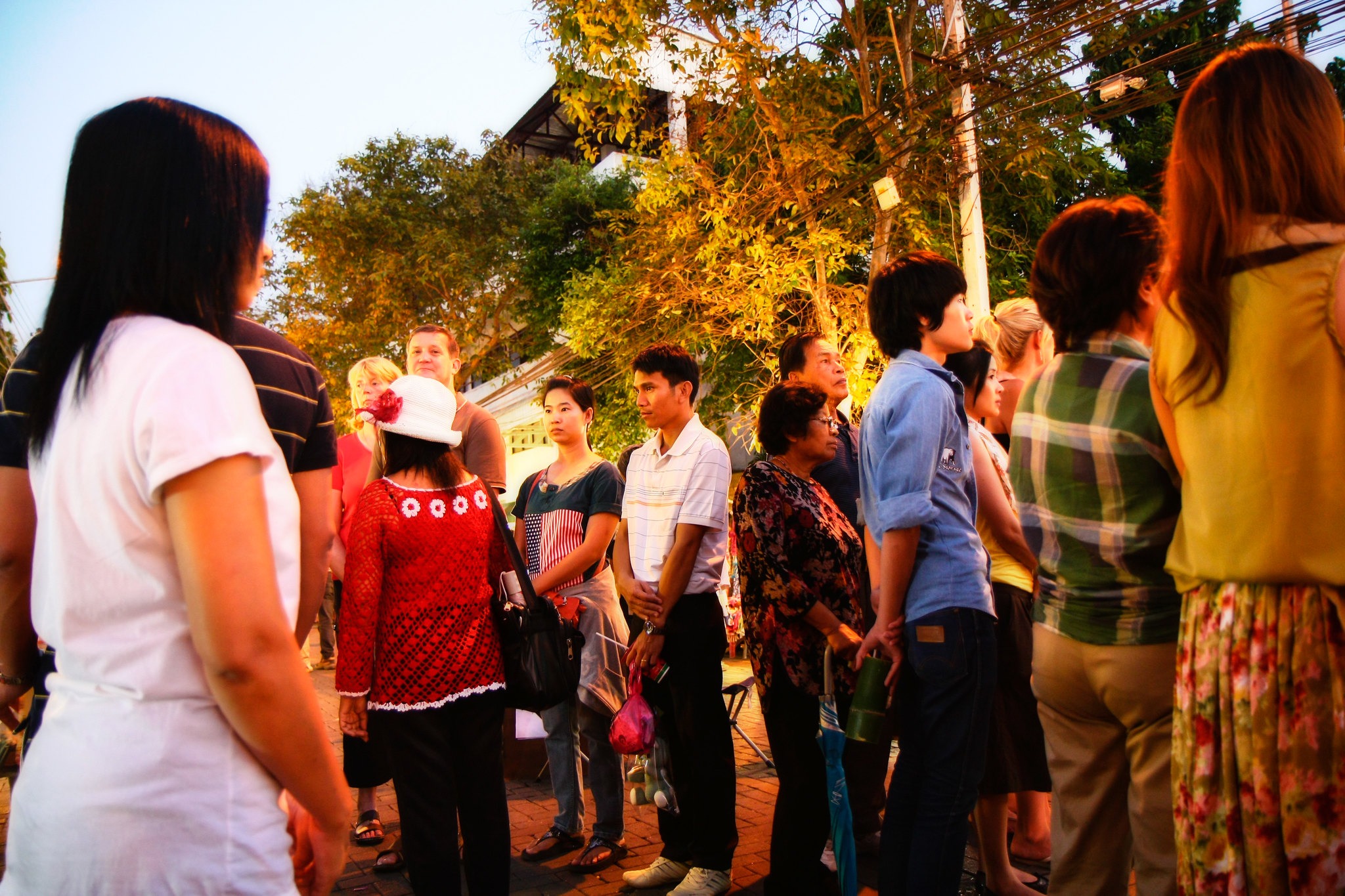
People in Thailand stop for the 6 pm anthem (Picture Credit: mazlov)
As fellow Thai-Indian Ashima, a third-generation Thai, said, “Growing up here, being Thai is all I really know. I don’t feel connected to my Indian roots as I don’t speak the language and haven’t visited enough. At the same time, I know I’ll never quite be seen as Thai, either. Thai people often don’t consider me Thai.” However, there is usually a sudden shift in their attitudes towards her once she starts speaking; her Thai is so local that, as she puts it, she sounds like a trucker. It seems language is as big a part of belonging as looks: when locals hear Ashima talk, I’ve felt the palpable change in their treatment towards her, especially because I’m not able to command that same change.
When I ask people around me what Thai-ness is to them, no matter how many generations their families have been here, the answers are quite similar. As my neighbor, Rudy, put it, “being Thai means to be carefree, selfless, and hospitable. That’s why we smile all the time, and say mai bpen rai [the Thai version of hakuna matata]. We always want to help other people, that is our core religion or way of life.” Thai society clearly puts the community above the individual, and so politeness and sensitivity are far more valuable than personal ambition or independence. The term graeng jai, which has no English equivalent, expresses a mix of respect, shame, hesitation, and deference, an attitude which avoids inconveniencing or upsetting others. This level of consideration, a system revolving around giving and not taking, lies at the heart of being Thai.
The term graeng jai expresses a mix of respect, shame, hesitation, and deference, an attitude which avoids inconveniencing or upsetting others.
It is this term which, despite my needling impostor syndrome, convinces me that I am behaviorally Thai enough to merit citizenship. Sure, it often trips me up when I’m not in Thailand. For example, I say yes far too much. In college, I once caught someone using my utensils in the shared kitchen; they were scattered amidst a jungle of flour, vegetable ends and other meal remnants. “Oh, that’s my stuff,” I said when I saw. “Shit,” she said, “here, I’ll clean it and give it back.” Instinctively, I responded, “Oh, don’t worry, I’ll clean it!” and off she went, leaving me with my inherited mess and my inherited graeng jai.
As Rudy explained, “This attitude sometimes means that we are more comfortable following and not leading, and we can be too easy-going.” The lack of expressed aggression can lead to a lack of progress, because fixable issues are not worked through. There is also pressure to accept the status quo, because change can require disruption. It’s not unusual for people here to leave their jobs by saying they need to go upcountry for a while to take care of sick relatives; that phrase is widely understood and accepted as, “I quit.” Rather than show dissatisfaction, which would be rude, conflict is evaded. This can, understandably, lead to deep-rooted feelings of not only inertia, but resentment – sometimes without the other involved parties ever knowing. Still, I’d offer to clean those utensils again in an instant. What I need to work on is how I pronounce, graeng jai, not how I perform it.
